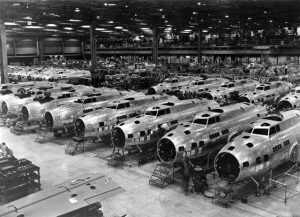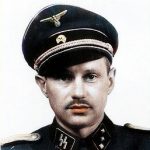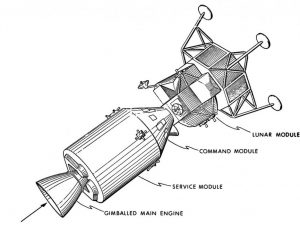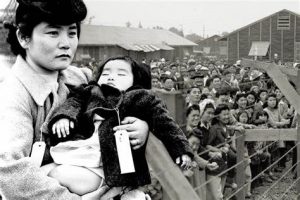Monthly Archives: July 2019

 My grand niece, Zoey Iverson is an amazing child. Zoey is just 4 years old, but she has taken on a task that is far beyond her years. Zoey is getting ready to start pre-school in the fall, but she is already a teacher. I’m sure that seems incredible, but it’s the truth. Zoey’s older brother, Lucas, who is 8 years old, was born with Down Syndrome. To Zoey, Lucas is her big brother, and she loves him, and that is all that matters. Zoey knows that her brother is older than she is, and she also knows that he needs help with things. Zoey has assigned herself the task of being his helper and his teacher. That is an amazing feat for a 4 year old girl…and nobody told her to do this!! She just has a loving heart, and wants her brother to have the best chance there is.
My grand niece, Zoey Iverson is an amazing child. Zoey is just 4 years old, but she has taken on a task that is far beyond her years. Zoey is getting ready to start pre-school in the fall, but she is already a teacher. I’m sure that seems incredible, but it’s the truth. Zoey’s older brother, Lucas, who is 8 years old, was born with Down Syndrome. To Zoey, Lucas is her big brother, and she loves him, and that is all that matters. Zoey knows that her brother is older than she is, and she also knows that he needs help with things. Zoey has assigned herself the task of being his helper and his teacher. That is an amazing feat for a 4 year old girl…and nobody told her to do this!! She just has a loving heart, and wants her brother to have the best chance there is.
Zoey’s current project is helping her brother learn how to talk more and to use the bathroom more. At this point, Zoey and Lucas share a bedroom, so they play together all the time. They love to watch movies, hang out on the bed, look at books, cuddle, and play. They love their room. It is a sanctuary for them…their own space to do kid things. Zoey has been such an integral part of her brothers progress. From helping him learn to walk, to talking, to balance, to playtime, Zoey is very active in her brother’s progress.
Of course, Zoey loves to help her mommy, Cassie too. They do a lot of yardwork together, which Zoey really enjoys. And Zoey is not afraid of snakes in the yard either, although, she makes sure it’s ok to pick it up before she touches it. At snakes…I have to draw the line!! Eeeeewwww!! Zoey loves doing things with her daddy, 
 Chris, like fishing. She also has a kitten that she loves to play with and nurture. She has a very loving, kind heart. Her mom also informs me that…once in a while, Zoey likes to talk back and be a total of four-year-old. I guess that is pretty typical of all kids now and then. Maybe it’s because Zoey is such a mommy type, herself. When she is playing, Zoey likes to dress up in her princess dresses and play a lot of pretend games. Like all little girls, being a princess is paramount in their lives. Today is Zoey’s 4th birthday. Happy birthday Zoey!! Have a great day!! We love you!!
Chris, like fishing. She also has a kitten that she loves to play with and nurture. She has a very loving, kind heart. Her mom also informs me that…once in a while, Zoey likes to talk back and be a total of four-year-old. I guess that is pretty typical of all kids now and then. Maybe it’s because Zoey is such a mommy type, herself. When she is playing, Zoey likes to dress up in her princess dresses and play a lot of pretend games. Like all little girls, being a princess is paramount in their lives. Today is Zoey’s 4th birthday. Happy birthday Zoey!! Have a great day!! We love you!!

 Today it would be worth about $4750. Would you pay that much for a bicycle? I don’t think I would, but then I don’t suppose I would be buying a bicycle called the Spacelander. Still, if I was, $4750 would be the asking price, or something close to that number. The Spacelander was created by Benjamin Bowden, who was born June 3, 1906. He was a British industrial designer, whose specialty was automobiles and bicycles. He received violin training at Guildhall, and completed a course in engineering at Regent. Bowden designed the coachwork of Healey’s Elliott, an influential British sports car.
Today it would be worth about $4750. Would you pay that much for a bicycle? I don’t think I would, but then I don’t suppose I would be buying a bicycle called the Spacelander. Still, if I was, $4750 would be the asking price, or something close to that number. The Spacelander was created by Benjamin Bowden, who was born June 3, 1906. He was a British industrial designer, whose specialty was automobiles and bicycles. He received violin training at Guildhall, and completed a course in engineering at Regent. Bowden designed the coachwork of Healey’s Elliott, an influential British sports car.
In 1925 Bowden began working as an automobile designer for the Rootes Group. By the late 1930s, Bowden was the chief body engineer for the Humber car factory in Coventry. During World War II, his design of an armored car was used by Winston Churchill and George VI for their protection. In 1945, he left the Rootes Group, and with partner John Allen, formed his own design company in Leamington Spa. The studio was one of the first such design firms in Britain. Bowden designed the body of Healey’s Elliott in 1947. It was the first British car to break the 100 mile per hour barrier. Working with Achille Sampietro who created the chassis, Bowden drew the initial design for the auto directly onto the walls of his house. Unusual…yes, but it worked for him, I guess. Shortly before his departure to the United States Bowden penned a sketch design for a two-seater sports racing prototype, the Zethrin Rennsport, being developed by Val Zethrin. This used the same wheelbase as the short-chassis Squire Sports, and was dressed in a contemporary, streamlined body. This design theme was carried through to his future work on the early Chevrolet Corvette and Ford Thunderbird.
He went on to design the Spacelander in 1946. It was a space-age looking bicycle, that was ahead of its time, since space travel wouldn’t occur for two decades. It’s not that the Spacelander would ever be used in space, but rather the design that seemed space-like. Bowden called the bicycle the Classic. In the early or mid 1950s, Bowden moved to Michigan, in the United States. While in Muskegon, Michigan in 1959, he met with Joe Kaskie, of the George Morrell Corporation, a custom molding company. Kaskie suggested molding the bicycle in fiberglass instead of aluminum, but the fiberglass frame was relatively fragile, and its unusual nature made it difficult to market to established bicycle distributors. Although he retained the futuristic appearance of the Classic, Bowden abandoned the hub dynamo, and replaced the drive-train with a more common sprocket-chain assembly. The new name, Spacelander, was chosen to capitalize on interest in the Space Race. Financial 
 troubles from the distributor forced Bowden to rush development of the Spacelander, which was released in 1960 in five colors: Charcoal Black, Cliffs of Dover White, Meadow Green, Outer Space Blue, and Stop Sign Red. The bicycle was priced at $89.50, which made it one of the more expensive bicycles on the market. Only 522 Spacelander bicycles were shipped before production was stopped, although more complete sets of parts were manufactured. In more recent years, the Spacelander has become a collector’s item…hence the price tag.
troubles from the distributor forced Bowden to rush development of the Spacelander, which was released in 1960 in five colors: Charcoal Black, Cliffs of Dover White, Meadow Green, Outer Space Blue, and Stop Sign Red. The bicycle was priced at $89.50, which made it one of the more expensive bicycles on the market. Only 522 Spacelander bicycles were shipped before production was stopped, although more complete sets of parts were manufactured. In more recent years, the Spacelander has become a collector’s item…hence the price tag.

 When I think of my grand niece, Raelynn Masterson, the picture that comes to mind is that of a tiny little girl of maybe 6 or 7, but Raelynn is no longer that little girl, because today is her sweet 16th birthday. I’m sure that the idea of their daughter turning 16 is even harder for her parents, Rob and Dustie Masterson, and yet, like it or not, that iconic day has arrived.
When I think of my grand niece, Raelynn Masterson, the picture that comes to mind is that of a tiny little girl of maybe 6 or 7, but Raelynn is no longer that little girl, because today is her sweet 16th birthday. I’m sure that the idea of their daughter turning 16 is even harder for her parents, Rob and Dustie Masterson, and yet, like it or not, that iconic day has arrived.
I think we all know what the 16th birthday means…driving. I’m not sure if they will get her license today, but I’m sure that it won’t be very long. Driving is the most important part of turning 16, after all. It’s the day we no longer have to depend on someone else get us where we need to go. Another plus is that once she has her license, Raelynn can help her parents with transporting her younger siblings, Matt and Anna. It will be fun for all of them.
Raelynn is a good student, who likes school, and does well in her studies. She is a quiet girl, who tends to focus on what she is doing. She has a soft heart, especially when it comes to animals, and her grandma’s cat has often been the recipient of her kind caresses. That cat loves Raelynn. She is also much loved by her siblings. Don’t get me wrong. Like all siblings, they have their fights, but when it comes down to need, those kids are there for each other. When Raelynn had to have back surgery to correct Scoliosis, her siblings were very good to her. They wanted to help her to get well quickly and their help did not go unnoticed by their sister. She will always be grateful to them.
It’s so hard to believe that Raelynn is now old enough to drive. Before long, I suppose she will have a job and 

 will be out doing her own things and making her own money. Raelynn is a pretty responsible girl. I think she will be a good driver, and a good employee, but I still can’t resist warning the general public…”Stay off the sidewalks…new driver on the roads!” Today is Raelynn’s sweet 16th birthday. Happy birthday Raelynn!! Have a great day!! We love you!!
will be out doing her own things and making her own money. Raelynn is a pretty responsible girl. I think she will be a good driver, and a good employee, but I still can’t resist warning the general public…”Stay off the sidewalks…new driver on the roads!” Today is Raelynn’s sweet 16th birthday. Happy birthday Raelynn!! Have a great day!! We love you!!

 In World War II, my dad, Allen Spencer was the Flight Engineer and top turret gunner on a B-17. The B-17 was an amazing plane. Strategic bombing missions actually began at the tail end of World War I, And the big world powers knew that they needed to develop bomber fleets that could handle this new kind of bombing mission, because if they did not, they would be vulnerable to the evil nations who did develop such bombers. During the month of August 1934, in anticipation of rising tensions in the Pacific, the US Army Air Corps proposed a new multi-engine bomber that would replace the outdated Martin B-10. They put out the challenge and Boeing decided to get into the competition. The plan for this bomber was to provide reinforcement to bases in Hawaii, Alaska, and Panama.
In World War II, my dad, Allen Spencer was the Flight Engineer and top turret gunner on a B-17. The B-17 was an amazing plane. Strategic bombing missions actually began at the tail end of World War I, And the big world powers knew that they needed to develop bomber fleets that could handle this new kind of bombing mission, because if they did not, they would be vulnerable to the evil nations who did develop such bombers. During the month of August 1934, in anticipation of rising tensions in the Pacific, the US Army Air Corps proposed a new multi-engine bomber that would replace the outdated Martin B-10. They put out the challenge and Boeing decided to get into the competition. The plan for this bomber was to provide reinforcement to bases in Hawaii, Alaska, and Panama.
Enter the B-17 Flying Fortress. Boeing competed against both Martin and Douglas for the contract to build 200 units of such a bomber, but failed to deliver, as the first B-17 Flying Fortress crashed. Nevertheless, the Air Corps loved the design so much that they ordered 13 units for further evaluation and analysis. After a string of tests, it was introduced in 1938. The B-17 was now the prime bomber for all kinds of bombing raids. The prototype B-17 Bomber was built at the company’s own expense and was a fusion of the features of Boeing XB-15 and Boeing 247 Transport Aircraft. Initially, it could carry a payload of 4850 pounds along with 5x .30-inch machine guns. The 4x Hornet Radial Engines could produce 750 HP at 2100 meters. It was a tremendous machine. A reporter from the Seattle Times would nickname it The Flying Fortress…a name that stuck, even if he didn’t know how very accurate he was.
As World War II heated up, the attack on Pearl Harbor drew the United States into it, and the B-17 Flying 
 Fortress became a staple, used in every single World War II combat zone and by the time production ended in 1945. Boeing along with Douglas and Vega had built 12,731 bombers. When the US 8th Airforce arrived in England in 1942, their sole mission was to destroy Germany’s ability to wage war. They would use any means necessary, from carpet bombing to precision bombing. On August 17th, 1942, eighteen B-17s launched a bombing raid over Nazi-held territory in Europe, hitting railway networks and strategic points. The Luftwaffe was unprepared and didn’t know how to best attack the new planes, but it didn’t take long to improve their tactics. The B-17s suffered losses too. On September 6th, 1943, 400 bombers were sent out to attack a ball-bearing plant, 45 didn’t return. October 4th, 60 out of 291 B-17s sent to the same location were lost. January 11th, 1944, 600 B-17s were sent to various industries. Bad weather kept all but 238 of them on base. Still, 60 were lost. These losses were quite costly when you consider that a single B-17 Flying Fortress would cost $238,329 in 1945. The Luftwaffe quickly perfected their attacks on the B-17 Flying Fortress. Head on proved more fruitful and therefore the Americans developed the term “Bandits at 12 O’clock High” for oncoming Luftwaffe fighters.
Fortress became a staple, used in every single World War II combat zone and by the time production ended in 1945. Boeing along with Douglas and Vega had built 12,731 bombers. When the US 8th Airforce arrived in England in 1942, their sole mission was to destroy Germany’s ability to wage war. They would use any means necessary, from carpet bombing to precision bombing. On August 17th, 1942, eighteen B-17s launched a bombing raid over Nazi-held territory in Europe, hitting railway networks and strategic points. The Luftwaffe was unprepared and didn’t know how to best attack the new planes, but it didn’t take long to improve their tactics. The B-17s suffered losses too. On September 6th, 1943, 400 bombers were sent out to attack a ball-bearing plant, 45 didn’t return. October 4th, 60 out of 291 B-17s sent to the same location were lost. January 11th, 1944, 600 B-17s were sent to various industries. Bad weather kept all but 238 of them on base. Still, 60 were lost. These losses were quite costly when you consider that a single B-17 Flying Fortress would cost $238,329 in 1945. The Luftwaffe quickly perfected their attacks on the B-17 Flying Fortress. Head on proved more fruitful and therefore the Americans developed the term “Bandits at 12 O’clock High” for oncoming Luftwaffe fighters.
Various models of the B-17 Flying Fortress were produced, but the B-17G was the one that was most liked. Almost 9000 B-17Gs were produced, the most of any of the models, because of their superior specs. A B-17G weighed 65,000 pounds and could cruise at a speed of 150 miles per hour, peaking at 287 miles per hour. It could attain a service ceiling of 35,600 feet, and carry a 9600 pounds payload. The four Wright R-1820 Cyclone engines could produce 1200 horse power each! It was one rugged machine. One particular B-17 Bomber 
 survived a bombing mission over Cologne, Germany, and flew back to safety with 180 flak holes and only 2 out of 4 engines in operation. The veteran never forgot, and 75 years later wrote a thank you letter to Boeing. He was thankful to be alive. My dad always felt that way too. Any amount of damage that happens to a plane can mean the difference between crashing and making it home. The B-17 was truly a flying fortress, and on of the best planes to be in. The chances of coming home were better than most.
survived a bombing mission over Cologne, Germany, and flew back to safety with 180 flak holes and only 2 out of 4 engines in operation. The veteran never forgot, and 75 years later wrote a thank you letter to Boeing. He was thankful to be alive. My dad always felt that way too. Any amount of damage that happens to a plane can mean the difference between crashing and making it home. The B-17 was truly a flying fortress, and on of the best planes to be in. The chances of coming home were better than most.
 I think most of us who have mowed the lawn in our day will attest to the fact that even if you have a self propelled lawnmower or a riding lawn mowed, if you done do that job early in the morning or on a cloudy day, its hot out there. Its usually so hot and sticky, in fact that we have to take frequent breaks to head indoors to cool off in front of the air conditioner. Finally, in the 1950s, someone decided that the world needed a cooler way to mow the lawn. So, they added what can only be described as a giant popcorn popper to a riding lawn mower. They gave it its own electric generating system for operating running lights, a radio telephone, air conditioning, and even a cooling system to provide a chilled drink on a hot day. The assumption was that people could see its value beyond the lawn. It was described as a useful tool for many purposes. It could mow the lawn, weed it, feed it, seed it, spray for insects, plow snow, and haul equipment. It was even touted as a machine that could be used as a golf cart.
I think most of us who have mowed the lawn in our day will attest to the fact that even if you have a self propelled lawnmower or a riding lawn mowed, if you done do that job early in the morning or on a cloudy day, its hot out there. Its usually so hot and sticky, in fact that we have to take frequent breaks to head indoors to cool off in front of the air conditioner. Finally, in the 1950s, someone decided that the world needed a cooler way to mow the lawn. So, they added what can only be described as a giant popcorn popper to a riding lawn mower. They gave it its own electric generating system for operating running lights, a radio telephone, air conditioning, and even a cooling system to provide a chilled drink on a hot day. The assumption was that people could see its value beyond the lawn. It was described as a useful tool for many purposes. It could mow the lawn, weed it, feed it, seed it, spray for insects, plow snow, and haul equipment. It was even touted as a machine that could be used as a golf cart.
The old style push mower could only be classified as a workout machine, if you ask me. It took more muscle than some of the equipment many of us pay dearly to use at the local gym. And as to speed…well, it was nonexistent. Those old rotor style lawn mowers were brutal machines, and when the job was done, you needed a hot tub, a massage, and Excedrin, not necessarily in that order. The motorized lawnmower that most households have today is considered to be an amazing tool. It makes mowing something that even kids can do. The self-propelled mowers are light weight, and actually have an engine that maneuvers it forward, with a lot less effort than the older gas and electric mowers.
I’m sure that the inventor of the air conditioned lawn mower of the fifties had visions of everyone mowing their  lawns in comfort and style, but the reality is that the cost of one of the newfangled machine was far beyond what most people could afford, so it never really took off. As mowers became more and more lightweight and easier to use, the necessity of a way to keep cool has lessened, be it slightly. Still, the newfangled airconditioned riding lawnmower of the 50s was simply not cost effective, and so it was not a widely purchased or even widely known item. In one advertisement I found, it was called the “Lazy Man’s Power Mower.” I’m sure that kind of advertising didn’t exactly make people want to run out and buy one. There are air conditioned lawn mowers today, but they are mostly on industrial mowers, which makes sense, since people might spend hours at a time in one.
lawns in comfort and style, but the reality is that the cost of one of the newfangled machine was far beyond what most people could afford, so it never really took off. As mowers became more and more lightweight and easier to use, the necessity of a way to keep cool has lessened, be it slightly. Still, the newfangled airconditioned riding lawnmower of the 50s was simply not cost effective, and so it was not a widely purchased or even widely known item. In one advertisement I found, it was called the “Lazy Man’s Power Mower.” I’m sure that kind of advertising didn’t exactly make people want to run out and buy one. There are air conditioned lawn mowers today, but they are mostly on industrial mowers, which makes sense, since people might spend hours at a time in one.

 While researching some of the larger battles of World War II, I began to consider the brilliance of the men who planned these battles. Men like Sir Winston Spencer-Churchill, Supreme Allied Commander General Dwight D Eisenhower, Admiral Chester Nimitz, Admiral Frank Fletcher, and Admiral Raymond Spruance (who was a replacement, but proved to be instrumental in the success of Midway). These men and others like them knew that the stakes were high, and by sheer numbers, the Allies were outnumbered by the Axis armies. That said, they also knew that the fate of the world was in their hands. If they lost this war, the Japanese and Germans would quite likely take over and rule the world. Life as we knew it would cease to exist.
While researching some of the larger battles of World War II, I began to consider the brilliance of the men who planned these battles. Men like Sir Winston Spencer-Churchill, Supreme Allied Commander General Dwight D Eisenhower, Admiral Chester Nimitz, Admiral Frank Fletcher, and Admiral Raymond Spruance (who was a replacement, but proved to be instrumental in the success of Midway). These men and others like them knew that the stakes were high, and by sheer numbers, the Allies were outnumbered by the Axis armies. That said, they also knew that the fate of the world was in their hands. If they lost this war, the Japanese and Germans would quite likely take over and rule the world. Life as we knew it would cease to exist.
Strategy is everything. Of course, part of that strategy involves something that many Americans have come to hate these days…fake news. These strategic minds knew that somehow they had to fool the Japanese into believing that no attack was coming, or that the advancing armies were headed elsewhere. It sounds simple, but this wasn’t the movies. Nevertheless, information was leaked to the enemy, while the Allied armies advanced as planned. The strategy worked perfectly on D-Day when Hitler was fooled, by men he had called idiots, into thinking that the target was at some point along their Atlantic Wall…the 1,500-mile system of coastal defenses that the German High Command had constructed from the Arctic Circle to Spain’s northern border…or even as far away as the Balkans. Vital to Operation Bodyguard’s success were more than a dozen German spies in Britain who had been discovered, arrested and flipped by British intelligence officers. The Allies  fed faulty information to these Nazi double agents to pass along to Berlin. A pair of double agents nicknamed Mutt and Jeff relayed detailed reports about the fictitious British Fourth Army that was gathering in Scotland with plans to join with the Soviet Union in an invasion of Norway. The Allies also fabricated radio chatter about cold-weather issues such as ski bindings and the operation of tank engines in subzero temperatures. The plan worked as Hitler sent one of his fighting divisions to Scandinavia just weeks before D-Day.
fed faulty information to these Nazi double agents to pass along to Berlin. A pair of double agents nicknamed Mutt and Jeff relayed detailed reports about the fictitious British Fourth Army that was gathering in Scotland with plans to join with the Soviet Union in an invasion of Norway. The Allies also fabricated radio chatter about cold-weather issues such as ski bindings and the operation of tank engines in subzero temperatures. The plan worked as Hitler sent one of his fighting divisions to Scandinavia just weeks before D-Day.
At Midway, the American “Doolittle” raid, a propaganda air attack on Tokyo launched from the carrier USS Hornet, prompted Japanese Admiral Isoroku Yamamoto to plan a final showdown with the remnants of the American fleet before letting his forces rest. The “Doolittle” raid had been an insult and it had threatened the life of the emperor. Yamamoto was confident that he had the advantage in numbers and quality to destroy the American carrier fleet. He planned to confuse the enemy with a diversionary attack on the Alaskan coast, drawing the Americans north, only to launch his main attack on Midway Island the following day, which would see the Americans hurrying south, into an ambush. With a great show of overelaboration, which was typical of Japanese military planning. Yamamoto divided his force into three main groups. There were four big carriers, the battlefleet, and the invasion force. These three groups were too far apart for mutual support. The Japanese carrier group operated in close order, commanded by Admiral Nagumo, who had led them for the attack at Pearl Harbor. Nimitz, for his part, could not hope to win a direct engagement. He had to stake everything on exploiting his intelligence windfall, and try to ambush the enemy. He secretly reinforced the air units on Midway, using the island as an unsinkable aircraft carrier. His sea-going carriers were positioned to the 
 northeast of the island, waiting to ambush the Japanese carriers when they arrived for their assault. The American tactics relied on the peculiar characteristics of carrier warfare. Nimitz knew the first attack would be decisive for either side, carriers being full of fuel and ordnance, hence highly vulnerable to bombs and torpedoes. The American tactical commanders, admirals Frank Fletcher and Raymond Spruance, also knew they were playing for very high stakes. They kept the two task forces separate. The strategy worked, and the Japanese never fully recovered.
northeast of the island, waiting to ambush the Japanese carriers when they arrived for their assault. The American tactics relied on the peculiar characteristics of carrier warfare. Nimitz knew the first attack would be decisive for either side, carriers being full of fuel and ordnance, hence highly vulnerable to bombs and torpedoes. The American tactical commanders, admirals Frank Fletcher and Raymond Spruance, also knew they were playing for very high stakes. They kept the two task forces separate. The strategy worked, and the Japanese never fully recovered.
 In a war, there are many heroes, and all too often, many of them are unsung heroes, who heroic acts all but go unnoticed. Lieutenant Colonel Matt Urban was one of those heroes, who actually became an Urban Legend, because of his uncanny ability to seemingly come back from the dead. Urban was one of the most decorated American officers of World War II. He fought in seven campaigns and was wounded seven times. Each time he was wounded, he seemingly came back to life…so often, in fact, that the Germans gave him the nickname “the Ghost.” When he was given the Medal of Honor, his citation referred to ten separate acts of bravery during the Normandy campaign alone.
In a war, there are many heroes, and all too often, many of them are unsung heroes, who heroic acts all but go unnoticed. Lieutenant Colonel Matt Urban was one of those heroes, who actually became an Urban Legend, because of his uncanny ability to seemingly come back from the dead. Urban was one of the most decorated American officers of World War II. He fought in seven campaigns and was wounded seven times. Each time he was wounded, he seemingly came back to life…so often, in fact, that the Germans gave him the nickname “the Ghost.” When he was given the Medal of Honor, his citation referred to ten separate acts of bravery during the Normandy campaign alone.
To name a few of the heroic and maybe just a little bit crazy acts of bravery, Urban took on multiple enemy tanks with a bazooka, all while walking on a cane because he’d broken his leg landing on Utah Beach. He organized multiple counterattacks after nearly having his leg blown off, then breaking himself out of the hospital, hitchhiking to the front, immediately throwing himself into battle, running into an abandoned tank and driving it toward the enemy line with no crew!! He was wounded again and again, but refused to be evacuated. Finally, a bullet in the throat took him out of combat for good. His reign of terror  against the Germans was over, but not his life. Once again, the Germans couldn’t kill “the Ghost.” Urban recovered, survived the war, and lived until 1995. Urban died on March 4, 1995, in Holland, Michigan, at the age of 75. The cause of death was a collapsed lung, reportedly due to his war injuries. He is buried in Plot: Section 7a, Grave 40 at Arlington National Cemetery in Arlington, Virginia.
against the Germans was over, but not his life. Once again, the Germans couldn’t kill “the Ghost.” Urban recovered, survived the war, and lived until 1995. Urban died on March 4, 1995, in Holland, Michigan, at the age of 75. The cause of death was a collapsed lung, reportedly due to his war injuries. He is buried in Plot: Section 7a, Grave 40 at Arlington National Cemetery in Arlington, Virginia.
“Matt Louis Urban was a highly decorated United States Army combat soldier who served with distinction as an infantry officer in the Mediterranean and European Theater of Operations during World War II. He scouted, led charges upfront, and performed heroically in combat on several occasions despite being wounded. He retired after World War II as a lieutenant colonel. Urban received over a dozen individual decorations for combat from the U.S. Army, including seven Purple Hearts. In 1980, he received the Medal of Honor and four other individual decorations for combat belatedly for his actions in France and Belgium in 1944. In Section 7a of the “Prominent Military Figures”
Matt Urban was born Matthew Louis Urbanowicz in Buffalo, New York, to Polish immigrant Stanley Urbanowicz,  a plumbing contractor. His mother Helen was born in Depew, New York. He attended East High School in Buffalo, and graduated in 1937. Urban had three brothers: Doctor Stanley (Urbanowicz) Urban, Arthur (Urbanowicz) Urban, and Eugene, who died in 1927 from appendicitis. In the fall of 1937, he enrolled at Cornell University in Ithaca, New York, majoring in history and government with a minor in community recreation. He graduated on June 14, 1941, with a Bachelor of Arts degree. For reasons unknown, he used the name Matty L. Urbanowitz during his last year of college. While at Cornell University, he was a member of the Reserve Officers Training Corps (ROTC), the track and boxing teams, and the Kappa Delta Rho fraternity. Nevertheless, his greatest accomplishment was that of the Urban Legend known as “the Ghost.”
a plumbing contractor. His mother Helen was born in Depew, New York. He attended East High School in Buffalo, and graduated in 1937. Urban had three brothers: Doctor Stanley (Urbanowicz) Urban, Arthur (Urbanowicz) Urban, and Eugene, who died in 1927 from appendicitis. In the fall of 1937, he enrolled at Cornell University in Ithaca, New York, majoring in history and government with a minor in community recreation. He graduated on June 14, 1941, with a Bachelor of Arts degree. For reasons unknown, he used the name Matty L. Urbanowitz during his last year of college. While at Cornell University, he was a member of the Reserve Officers Training Corps (ROTC), the track and boxing teams, and the Kappa Delta Rho fraternity. Nevertheless, his greatest accomplishment was that of the Urban Legend known as “the Ghost.”
 When most people hear the word Nazi, they don’t associate it with anything good. I don’t even think the Nazis of today consider themselves to be an organization for good. Probably the most atrocious part of Nazi Germany was the death camps where the Jewish people were confined, tortured with experimentation, and gassed to their deaths. One such camp, Auschwitz was known for cruelty so egregious that in 1947, after the war was over, a Polish court convened a special tribunal to mete out justice to 40 former Auschwitz personnel.
When most people hear the word Nazi, they don’t associate it with anything good. I don’t even think the Nazis of today consider themselves to be an organization for good. Probably the most atrocious part of Nazi Germany was the death camps where the Jewish people were confined, tortured with experimentation, and gassed to their deaths. One such camp, Auschwitz was known for cruelty so egregious that in 1947, after the war was over, a Polish court convened a special tribunal to mete out justice to 40 former Auschwitz personnel.
The German invasion of Poland in September 1939, sparked World War II, and the Germans immediately converted Auschwitz I, a former army barracks, to hold Polish political prisoners. The first prisoners, German criminals brought to the camp as functionaries, arrived in May 1940, and the first gassing of prisoners took place in block 11 of Auschwitz I in September 1941. Auschwitz II–Birkenau went on to become a major site of the Nazis’ “Final Solution” to the Jewish Question…basically Hitler’s hatred of the Jewish people. Transport trains delivered Jews from all over German-occupied Europe to the camp’s gas chambers from early 1942 until late 1944. Of the estimated 1.3 million people sent to Auschwitz, at least 1.1 million died, approximately 90% of them Jews. It is thoughts that  one in six Jews killed in the Holocaust died at Auschwitz. Others deported to Auschwitz included 150,000 non-Jewish Poles, 23,000 Roma, 15,000 Soviet prisoners of war, 400 Jehovah’s Witnesses, tens of thousands of others of diverse nationalities, and an unknown number of gay men. Many of those not killed in the gas chambers died because of starvation, forced labor, infectious diseases, individual executions, and medical experiments.
one in six Jews killed in the Holocaust died at Auschwitz. Others deported to Auschwitz included 150,000 non-Jewish Poles, 23,000 Roma, 15,000 Soviet prisoners of war, 400 Jehovah’s Witnesses, tens of thousands of others of diverse nationalities, and an unknown number of gay men. Many of those not killed in the gas chambers died because of starvation, forced labor, infectious diseases, individual executions, and medical experiments.
The appalling conduct of the Nazi staff at Auschwitz is among the worst treatment of prisoners in human history. In fact, the cruelty routinely perpetrated was so horrific that, in 1947, a Polish court convened a special tribunal to finally deal out justice to 40 former Auschwitz personnel. Of the defendants, 21 were condemned and executed, 18 were convicted and given jail sentences, but one man, Dr Hans Munch, was acquitted. That one acquittal might have been considered an outrage to the world, were it not for the testimony of former prisoners. The former prisoners testified that Munch had been kind and humane. The said that he gave them food and extended bogus experiments on female prisoners because he knew they would be gassed once the  experiments were concluded. Most impressive, Munch refused to participate in the selection process dictating who lived or died at Auschwitz. That in and of itself could have brought about his own death. In the final days of the war, his last official act at a concentration camp was to advise an inmate on how to escape, wish him good luck, and hand the prisoner his service revolver.
experiments were concluded. Most impressive, Munch refused to participate in the selection process dictating who lived or died at Auschwitz. That in and of itself could have brought about his own death. In the final days of the war, his last official act at a concentration camp was to advise an inmate on how to escape, wish him good luck, and hand the prisoner his service revolver.
Sadly, in later life, Munch was diagnosed with Alzheimer’s Disease, ignited a controversy later in his life with bizarre interviews about his tenure at Auschwitz. He got quite mixed up about what went on there, and in my opinion, it is a good thing that the prisoners stood up for this one good Nazi, who wasn’t really a Nazi after all.
 With the arrival of the 50th anniversary of the landing on the moon, on July 20, 2019, many people have been reviewing old footage and books about the event. I came across a book that caught my eye on Audible. The book, The Man Who Knew The Way To The Moon, by Todd Zwillich wasn’t exactly about the moon landing, but rather how it became possible. The book begins with Russia beating the United States to the punch when they sent a man Yuri Alekseyevich Gagarin, into space on April 12, 1961. As short as the flight was…just 89 minutes…it was still an embarrassment to the United States who felt they should have been first.
With the arrival of the 50th anniversary of the landing on the moon, on July 20, 2019, many people have been reviewing old footage and books about the event. I came across a book that caught my eye on Audible. The book, The Man Who Knew The Way To The Moon, by Todd Zwillich wasn’t exactly about the moon landing, but rather how it became possible. The book begins with Russia beating the United States to the punch when they sent a man Yuri Alekseyevich Gagarin, into space on April 12, 1961. As short as the flight was…just 89 minutes…it was still an embarrassment to the United States who felt they should have been first.
In answer to the Soviet space flight, President Kennedy challenged NASA to put a man on the moon before the end of the decade. NASA sort of panicked. Yes, they had been thinking about a moon landing…and some remote point down the road, but they were nowhere near ready to go them by the end of the decade. Nevertheless, they began to explore ideas to make it happen. One of those people who had been considering a way to make the landing possible. By this time, no one doubted the ability to go into space, and to safely return to earth. Landing on the moon was a different story.
The widely accepted method of landing on the moon was to have the original rocket back onto the moon, carrying enough fuel to take off again and return to Earth. A man named John Houbolt thought that was…well, simply impossible. Now, I’m no aeronautical engineer, like Houbolt was, and maybe I have the advantage of  knowing about the past space exploration victories, but when I think about three astronauts backing a 90 foot high, fully fueled rocket onto the moon…all I can say is, “That’s ludicrous!!” People often say that an idea doesn’t take a rocket scientist, and it this case, maybe it shouldn’t be a rocket scientist, but rather an aeronautical engineer.
knowing about the past space exploration victories, but when I think about three astronauts backing a 90 foot high, fully fueled rocket onto the moon…all I can say is, “That’s ludicrous!!” People often say that an idea doesn’t take a rocket scientist, and it this case, maybe it shouldn’t be a rocket scientist, but rather an aeronautical engineer.
John Houbolt, kept saying and trying to be heard, that it wouldn’t work, but he had a plan that would…Lunar Orbit Rendezvous or LOR. In Houbolt’s design, a smaller lunar module would land on the moon while the command module waited above. Then the Lunar module would take of and dock with the command module for the trip back to Earth. It is the way we know did work, because we have the advantage of time, but the scientists and engineers at NASA would not listen. One man, Max Faget, an immigrant from British Honduras, who designed the Mercury module, actually stood up at a meeting where Houbolt was presenting his idea, and yelled at the group, saying, “His figures lie! He doesn’t know what he’s talking about!” Houbolt was horribly humiliated, and he never forgot the incident. He didn’t let it stop him either. In the end, as Faget spent many hours trying desperately to make his own figures work, so  that a rocket could back onto the moon, he finally had to admit defeat. He called John Houbolt, and conceded the lunar landing design to Houbolt’s design, which was, as we all know, completely successful, because after all, his figures did not lie, and he did know what he was talking about. It was a great moment in history, and in Houbolt’s life, except for the fact that no one knew that the successful landing was his design. While the Lunar landing, 50 years ago was an amazing accomplishment, I find it quite sad that it took so many years for the world to know about how one man’s refusal to give up, actually made Lunar landing possible. We owe John Houbolt a great debt of gratitude, and it is more than 50 years overdue. Now that’s ludicrous!!
that a rocket could back onto the moon, he finally had to admit defeat. He called John Houbolt, and conceded the lunar landing design to Houbolt’s design, which was, as we all know, completely successful, because after all, his figures did not lie, and he did know what he was talking about. It was a great moment in history, and in Houbolt’s life, except for the fact that no one knew that the successful landing was his design. While the Lunar landing, 50 years ago was an amazing accomplishment, I find it quite sad that it took so many years for the world to know about how one man’s refusal to give up, actually made Lunar landing possible. We owe John Houbolt a great debt of gratitude, and it is more than 50 years overdue. Now that’s ludicrous!!
 A while back, my sister, Cheryl Masterson suggested a book to me because she knew that I liked World War II history. The book, Midnight In Broad Daylight, by Pamela Rotner Sakamoto, was about, among other things, the plight of the Japanese American citizens that followed the attack on Pearl Harbor. The book covered a couple of specific families, but as I listened to it through Audible, I began to consider just how the Japanese American citizens, many of whom were born in the United States to legal immigrants from Japan long before the war and the attack on Pearl Harbor ever happened.
A while back, my sister, Cheryl Masterson suggested a book to me because she knew that I liked World War II history. The book, Midnight In Broad Daylight, by Pamela Rotner Sakamoto, was about, among other things, the plight of the Japanese American citizens that followed the attack on Pearl Harbor. The book covered a couple of specific families, but as I listened to it through Audible, I began to consider just how the Japanese American citizens, many of whom were born in the United States to legal immigrants from Japan long before the war and the attack on Pearl Harbor ever happened.
For all intents and purposes, it seemed that these people were loyal to their new country. Many wanted to serve in the US military to fight against the Axis of Evil countries, including Japan. I could see that, but I could also see the other side of the coin. The rest of the American people were scared. They didn’t know if they could trust these Japanese American citizens. They wondered if they were spies, sent to infiltrate our defenses. Before anyone could really give the situation a second thought, if was decided that the Japanese American citizens and the legal immigrants awaiting naturalization, had to be placed in Japanese internment camps which were established by President Franklin Roosevelt through his Executive Order 9066. At the time, no one could really look rationally at both sides of the situation. It was an awful time for many people.
I thought about the people who really were loyal to the United States. They wanted to help, but no one trusted them. Many of them still had family in Japan, so their loyalties might have been divided, even if they didn’t agree with the attack on Pearl Harbor. I suppose some might have actually been loyal the Japan, I don’t know if we will ever really know for sure. It didn’t matter anyway, because their lives were put on hold…indefinitely. Some people got out of the camps because they had language skills the US military needed. These people were give a chance to get out of the camps, in exchange for serving in the military and making valuable translations. There weren’t a lot of them, but those who did this important work proved themselves to be loyal. Some had been trained in Japanese schools, prior to coming to America. Some had family in Japan, and even family in the Japanese military. I couldn’t imagine how torn they must have been, but they did their jobs. I don’t know if they knew about what was coming for Hiroshima or Nagasaki, but the people in the true story of the book, had  family in Hiroshima on the day of the atomic bombings, as well as family in the Japanese military. They had no way to tell them to get out of town, although civilians were warned to get out. People didn’t trust what they were told, or just didn’t understand what was going on. Somehow, the family in the book survived, but so many didn’t. I can’t feel sorry for any of the Japanese people who agreed with what the Japanese government was doing, but there were people there, as there always are, who didn’t have a choice. They were caught on the wrong side and they couldn’t leave. Those Japanese Americans were caught too. They were on the right side, but they were caught on the wrong side of the right side…if that makes any sense at all.
family in Hiroshima on the day of the atomic bombings, as well as family in the Japanese military. They had no way to tell them to get out of town, although civilians were warned to get out. People didn’t trust what they were told, or just didn’t understand what was going on. Somehow, the family in the book survived, but so many didn’t. I can’t feel sorry for any of the Japanese people who agreed with what the Japanese government was doing, but there were people there, as there always are, who didn’t have a choice. They were caught on the wrong side and they couldn’t leave. Those Japanese Americans were caught too. They were on the right side, but they were caught on the wrong side of the right side…if that makes any sense at all.

